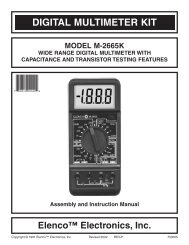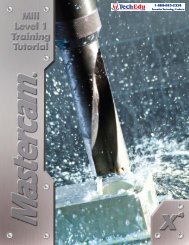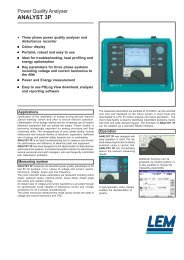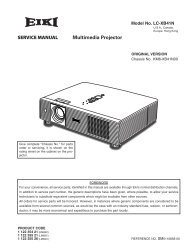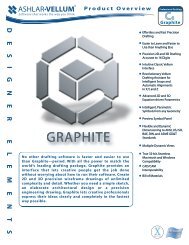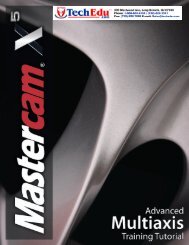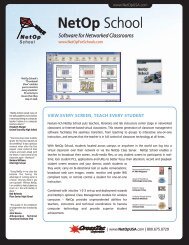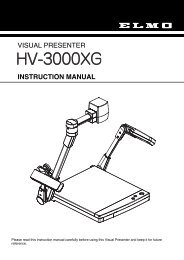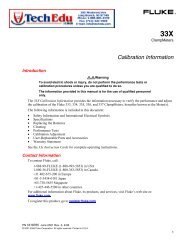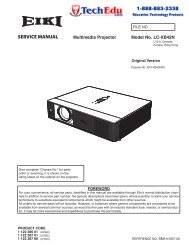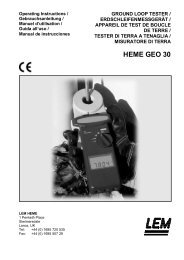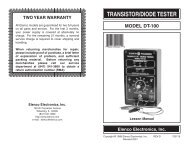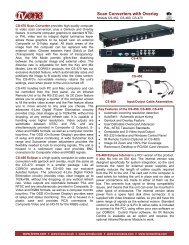SERVICE MANUAL LC-XB41 - TechEdu.com
SERVICE MANUAL LC-XB41 - TechEdu.com
SERVICE MANUAL LC-XB41 - TechEdu.com
You also want an ePaper? Increase the reach of your titles
YUMPU automatically turns print PDFs into web optimized ePapers that Google loves.
Note on Soldering<br />
Do not use solder containing lead.<br />
This product has been manufactured using lead-free<br />
solder in order to help preserve the environment.<br />
Because of this, be sure to use lead-free solder<br />
when carrying out repair work, and never use solder<br />
containing lead.<br />
Solder<br />
Use solder with the metal content and <strong>com</strong>position ratio<br />
by weight given in the table below. Do not use solders<br />
which do not meet these conditions.<br />
Metal content Tin (Sn) Silver (Ag) Copper (Cu)<br />
Lead-free solder has a melting point that is 30–40 °C<br />
(86–104 °F) higher than solder containing lead, and<br />
moreover it does not contain lead which attaches easily<br />
to other metals. As a result, it does not melt as easily<br />
as solder containing lead, and soldering will be more<br />
difficult even if the temperature of the soldering iron is<br />
increased.<br />
The extra difficulty in soldering means that soldering<br />
time will increase and damage to the <strong>com</strong>ponents or<br />
the circuit board may easily occur.<br />
Because of this, you should use a soldering iron<br />
and solder that satisfy the following conditions when<br />
carrying out repair work. Also, soldering work must be<br />
done in a short time.<br />
Composition<br />
96.5 % 3.0 % 0.5 %<br />
ratio by weight<br />
Note:<br />
If replacing existing solder containing lead with leadfree<br />
solder in the soldered parts of products that have<br />
been manufactured up until now, remove all of the<br />
existing solder at those parts before applying the leadfree<br />
solder.<br />
Soldering iron<br />
Use a soldering iron which is 70 W or equivalent, and<br />
which lets you adjust the tip temperature up to 450<br />
°C (842 °F) It should also have as good temperature<br />
recovery characteristics as possible.<br />
A14<br />
Diagrams & Drawings (KL6-<strong>XB41</strong>00)



